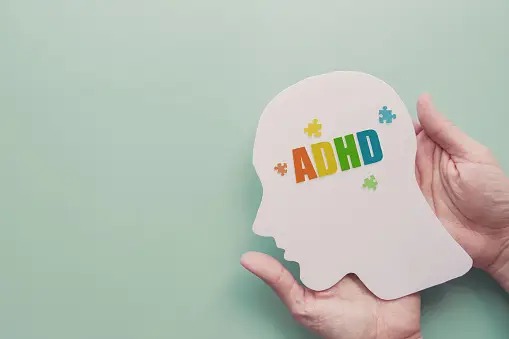ADHD, or Attention Deficit Hyperactivity Disorder, is a topic of growing interest in mental health and psychology. Understanding the various facets of this disorder is essential to effectively address it and provide the necessary support. In this article, we will explore in depth what ADHD in children is, how ADHD affects boys and girls, and its possible causes.
ADHD what is it?
ADHD, or Attention Deficit Hyperactivity Disorder, is a neurobiological condition that affects people of all ages, but is most commonly diagnosed in childhood. This disorder is characterized by the presence of key symptoms, including difficulties paying attention, impulsivity, and hyperactivity. ADHD is a chronic condition that can significantly influence the daily lives of those who suffer from it.
Defining ADHD involves a series of specific challenges. People with ADHD may have difficulty focusing on tasks, following instructions, staying organized, and controlling their impulses. These symptoms can vary in intensity and presentation from one individual to another, making ADHD a heterogeneous disorder. It is essential to recognize that ADHD is not due to a lack of effort or discipline; rather, it is the result of differences in brain function and chemistry that affect the regulation of behavior and attention.
Despite the challenges that ADHD presents, with the proper diagnosis and appropriate treatment approach, affected individuals can learn to manage their symptoms and lead productive and fulfilling lives. ADHD is an important issue that deserves understanding and support for those dealing with it, as it can affect your academic performance, work life, and personal relationships.
Causes of ADHD
Over the years, extensive research has been done to identify the underlying causes of ADHD. These investigations have revealed a variety of factors that may contribute to the appearance of this disorder. Next, we will take a closer look at some of the factors that have been associated with ADHD:
Anatomy and function of the brain:
One of the strongest theories suggests that ADHD may be related to differences in brain anatomy and function. It has been noted that people with ADHD may have lower levels of the parts of the brain that control attention and activity level. This may explain some of the disorder’s characteristic symptoms, such as difficulty concentrating. For more information about this connection, we recommend our post Cognitive functions: What they are and examples
Genes and inheritance:
Another important factor in the etiology of ADHD is genetics. It has been found that the disorder tends to be hereditary and can be passed from one generation to the next. In fact, a child with ADHD has about a 25% chance of having at least one parent with the same disorder. It is also possible that other close family members, such as siblings, share this diagnosis.
In some cases, ADHD can be diagnosed in both the child and a parent at the same time.
Additional risk factors
In addition to genetic and neurological factors, there are other elements that can increase the risk of developing ADHD.
Premature birth
Babies born prematurely may have a higher risk of developing ADHD later in life. Prematurity can influence brain development and function, which may contribute to the onset of the disorder.
Serious head injuries
In rare cases, severe head injuries can trigger ADHD or worsen symptoms in people who already have it. It is important to pay attention to brain health and treat injuries appropriately.
Prenatal exposures
Prenatal exposure to substances such as alcohol or nicotine from cigarettes has been associated with an increased risk of ADHD in offspring. These chemicals can affect brain development in the fetus and increase the likelihood of attention and hyperactivity problems later in life.
Environmental toxins
In less common cases, toxins present in the environment can play a role in the development of ADHD. For example, the presence of lead in a child’s body can influence his or her development and behavior.
Importantly, to date, no solid evidence has been found to support certain claims about the causes of ADHD. These claims include the idea that ADHD is caused by excessive consumption of sugar, food additives, allergies, or vaccines. Continued research is essential to better understand this disorder and provide appropriate support to those who suffer from it.
7 Types of ADHD: Understanding the variants
Attention Deficit Hyperactivity Disorder (ADHD) is a neurobiological condition that presents various manifestations and can affect children and adults alike. Below, we will explore the different variants of ADHD and their distinctive characteristics.
Type 1: Classic
Type 1 ADHD manifests itself from the earliest stages of life, even in early childhood. Children with attention deficit hyperactivity disorder who suffer from it tend to be restless, noisy, talkative, impulsive and demanding. From an early age, they seek the attention of everyone around them. This type is more common in children. Parents of these children often experience exhaustion, overwhelm, and even embarrassment due to their child’s behavior.
Common features of type 1 ADHD include:
- Inattention.
- Ease of distraction.
- Disorganization.
- Impulsiveness.
- Problems following instructions.
- Difficulty listening to others.
- Frequent mistakes and lack of attention to details.
- Hyperactivity.
- Excessive talking and constant interruptions.
Brain studies reveal lower activity in the lower prefrontal cortex, cerebellum, and basal ganglia when faced with tasks that require concentration.
Type 2: Inattentive
Type 2 ADHD is characterized by being less obvious and often goes unnoticed. Affected individuals are usually quiet, introverted and dreamy children. They are sometimes labeled as unmotivated, slow, or even lazy due to their apparent lack of attention.
Common features of ADHD type 2 include:
- Difficulty maintaining focus.
- Ease of distraction.
- Lack of organization.
- Difficulty following time and planning.
- Tendency to lose objects.
- Careless mistakes.
- Lack of attention to details.
- Tendency to daydream.
- Feeling of boredom.
- Demotivation and apathy.
Brain research shows decreased activity in the lower part of the prefrontal cortex, cerebellum, and basal ganglia when focusing on specific tasks.
Type 3: Attention deficit with excess focus
Type 3 ADHD shares symptoms of inattention with other types, but is characterized by excessive focus on certain things, often in a negative way. Those affected may become trapped in negative patterns of thinking and behavior and may have a tendency to be oppositional and argumentative. They may also be prone to compulsive behaviors.
Common features of ADHD type 3 include:
- Excessive or irrational worry.
- Rumination of negative thoughts.
- Oppositional behavior.
- Compulsive behaviors.
- Difficulty seeing alternatives.
- Tendency to hold grudges.
- Difficulty shifting attention.
- Lack of listening to others.
- Need to follow certain patterns.
Brain scans indicate increased activity in the anterior cingulate cortex, as well as decreased activity in the cerebral cortex and basal ganglia.
Type 4: Temporal lobe attention deficit
This type of ADHD presents a number of additional characteristics, such as memory problems, irritability, episodes of quick temper, and changes in sensory perception, such as seeing shadows or experiencing déjà vu. Those affected may experience excessive sensitivity and, in some cases, mild paranoia.
Common features of ADHD type 4 include:
- Memory problems.
- Irritability.
- Episodes of quick temper.
- Auditory processing problems.
- Periods of confusion.
- Unusual visual sensations.
- Excessive sensitivity.
- Unexplained headaches or abdominal pain.
- Negative thoughts.
- Learning difficulties.
SPECT brain scans show decreased activity in the temporal lobes and the lower part of the prefrontal cortex, cerebellum, and basal ganglia during concentration.
Type 5: Attention deficit with limbic involvement
ADHD type 5, in addition to the characteristics shared with other variants, is characterized by marked limbic hyperactivity, which contributes to a series of emotional symptoms. Those affected may experience mood swings, low energy, frequent irritability, and social isolation.
Common features of ADHD type 5 include:
- Bad mood.
- Negativity.
- Low energy.
- Frequent irritability.
- Conflict avoidance.
- Feelings of hopelessness.
- Feelings of guilt.
- Loss of interest in activities.
- Sleep disturbances.
- Chronic low self-esteem.
Brain studies using SPECT and mapping show increased limbic activity at rest and during concentration, as well as decreased activity in the prefrontal cortex, cerebellum, and basal ganglia during concentration.
Type 6: Attention Deficit High Brain Activity
ADHD type 6 is characterized by a global pattern of high brain activity. Affected people often have difficulty controlling their thoughts and emotions, and often feel overwhelmed. They respond poorly to psychostimulants and may present symptoms similar to bipolar disorders.
Common features of ADHD type 6 include:
- Excessive sensitivity to stimuli such as noise, light and touch.
- Cyclical mood swings.
- Mental rigidity.
- Oppositional behavior.
- Requirement.
- Periods of bad mood or insensitivity.
- Verbal incontinence.
- Unpredictable behavior.
- Fluctuating impulsivity.
- Great thoughts.
Neuroimaging studies with SPECT show increased activity in many areas of the brain, although this activity can vary between individuals.
Type 7: Attention Deficit with Anxiety
ADHD type 7 is characterized by low prefrontal activity and hyperactivity in the basal ganglia, which establishes a kind of brain “idle speed.” Those affected may experience chronic anxiety, as well as physical symptoms related to stress.
Common features of ADHD type 7 include:
- Frequent or constant anxiety.
- Symptoms of physical stress such as headaches.
- Avoidance of social situations.
- Difficulty speaking in public.
- Pessimistic attitude.
- Fear of the judgment of others.
Results from SPECT brain studies show increased activity in the basal ganglia at rest and during concentration, along with decreased activity in the prefrontal cortex and cerebellum during concentration.
Importantly, these categories are not included in the DSM-5, which classifies ADHD into predominantly inattentive types, predominantly hyperactive-impulsive types, and combined type. However, these descriptions can help understand the various manifestations of ADHD and their implications in everyday life.

